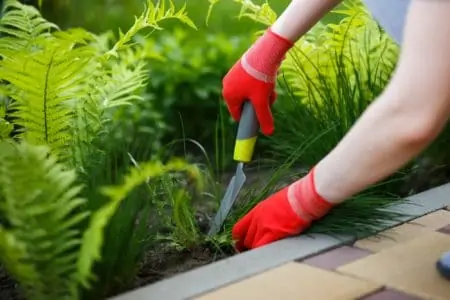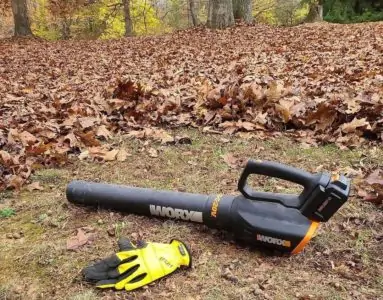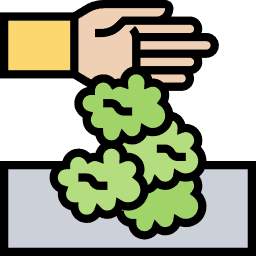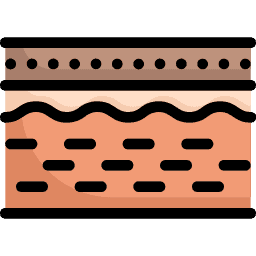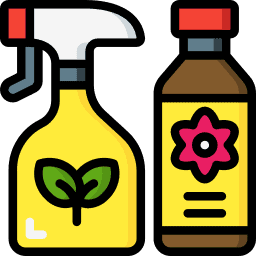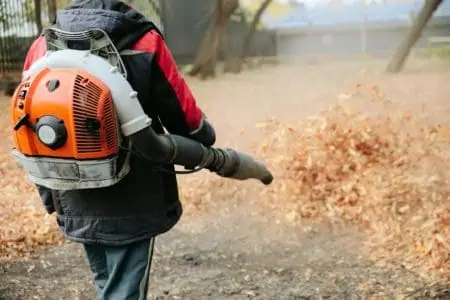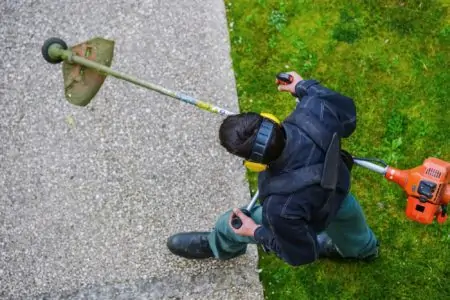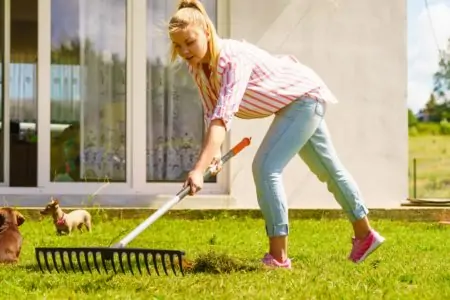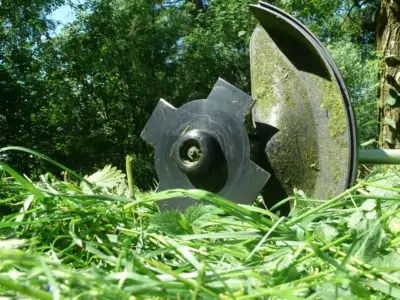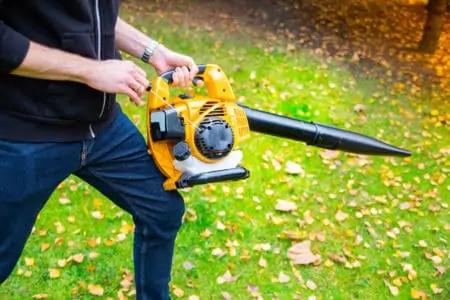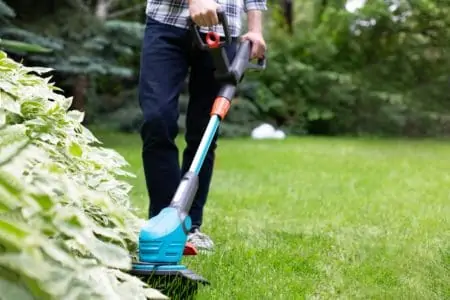While some weeds can protect and fertilize the soil and bring in helpful insects, weeds can also be very damaging to your lawn and garden. They can steal important nutrients, steal space that your plants require to grow, and attract parasites.
If you’re looking to get rid of your weeds, you’ve come to the right place. We’ll show you how to get rid of your weeds naturally, physically, and using chemical products.
This includes weeds in large areas, deep-rooted weeds, and how to remove weeds permanently. If you’re after a weed-free yard, keep reading.
Key Takeaways
- Dig them up: This may take a while but physically digging the weeds and removing the roots is the most effective way to eliminate weeds.
- Sharp long shovels: Get to the root of the problem with a long sharp shovel. This allows you to remove deep-rooted weeds for good.
- Glyphosate herbicide: A super common and effective herbicide.
How to Get Rid of Weeds Naturally
Not everybody wants to use a chemical substance to remove weeds. That’s where these five natural methods come in handy.
Dig Them Up
One of the most effective and natural ways of removing weeds is to dig them up physically. You can do this by hand or use a hand weeder tool.
- Dig around the weeds, locating the roots.
- Pull the roots out by hand.
- Find the center root and pull that up, making sure to pull up the whole root.
- Dry the weeds in the sun.
- Compost the weeds.
This is a time-consuming option, but this will inhibit regrowth if you can get to the roots.
Mulching
Mulching prevents weed growth by keeping the soil cool and limiting light to the weeds. There are many natural mulches available, such as the FibreDust CoCo Mulch.
You can also use your own mulch mixture such as pine bark straw, grass clippings, newspaper, or cardboard. Some mulches even attract the right kind of insects that will assist in weed removal.
Here’s how to apply mulch. Just be aware that different types of mulch may have differing instructions, so always check with the packaging instructions.
- Lay down a weed barrier such as newspaper or cardboard. Whatever you use, make sure it’s biodegradable. Don’t leave any gaps between sections.
- Soak the barrier.
- Apply 2-3 inches of your mulch of choice over the top of the weed barrier.
Expert Advice
Only use fresh mulch if using a wood-based mulch to minimize nitrogen depletion. We also recommend against using wood mulch on new plants. Instead, only use it on mature plants. Lastly, don’t place wood mulch near tree trunks or plant stalks as this can disease or decay this growth.
Corn Gluten Meal
Another natural method for removing weeds is corn gluten meal. It basically prevents the seeds from germinating and growing into established plants.
- Scatter the corn gluten meal around the weeds in early spring before the weeds have begun to sprout. This will act as a pre-emergent.
- Leave to do its thing!
Caution
Don’t scatter corn gluten meal in plant beds where you sow other seeds as it can also prevent these from germinating.
White Vinegar
You know we love a white vinegar hack. And good news — it can come in handy for getting rid of weeds, too! Just make sure you’re wearing protective clothing as the acetic acid in the vinegar can cause skin irritation.
Use white vinegar with anything between 5% to 20% acid. A higher percentage will be even more effective.
- If the vinegar isn’t already in a spray bottle, move it to one.
- Spray the white vinegar onto the weeds.
- Do not spray any garden plants or nearby soil.
- Repeat every few days until the weeds have died.
Solarize the Weeds
Our last natural tip is to solarize the weeds, which essentially means to suffocate and burn them.
- Place thin clear plastic over the existing weeds during the hot summer months.
- Leave the plastic there for about 4-6 weeks.
- Let the sun heat the ground and kill the weeds and the roots.
How to Remove Weeds from Lawns (Without Killing Grass)
If you’re worried about killing the grass, here are some safe ways to remove weeds without harming your grass.
One top tip for weeds in lawns is definitely to keep your grass maintained and healthy. When you have low-mowed grass, healthy and compact soil, and a lawn that isn’t too wet, you will discourage weed growth.
Once your lawn is in good shape, keep weeds away with these tips.
1. Spectracide Weed Stop For Lawns
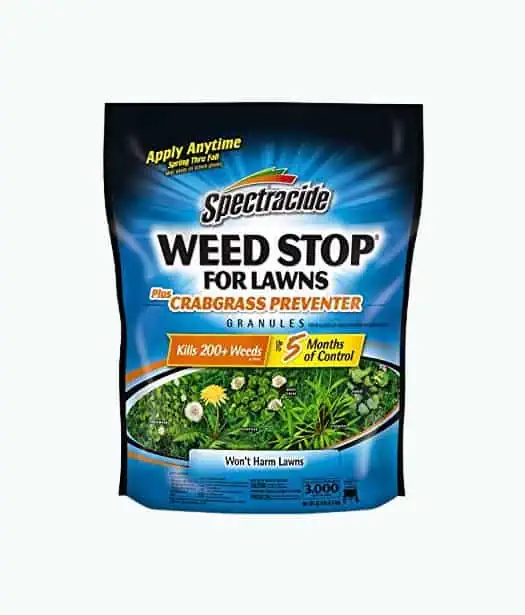
It’s handy to have a product on hand for you to use for weed-killing while protecting your lawn. Spectracide is an awesome product for killing weeds in your lawn while doing minimal damage, if any, to your grass.
This product can kill over 200 different types of weeds, whereas many other weed killers for lawns only target one or a few.
Simply apply this to active weeds throughout spring, summer and fall and enjoy up to five months of weed control.
2. Hand Weed
Another effective, although time-consuming, way to remove weeds from lawns is by hand-weeding. Pull up the entire plant, including the root, to inhibit new growth and kill the weeds.
How to Get Rid of Weeds From Large Area
Clearing a lot of weeds from a large area can be tricky business. It may take a while, but if you do it right, you’ll do it well.
- Remove as much weed as possible: Before dealing with the root of the problem, you should remove as much of the excess weeds as possible. If the weeds are quite tall, you may want to try using a brush cutter or strimmer to remove the tops of the weeds. Cut them as low to the ground as you can. Now that the weeds are more manageable, we can move on to the next steps.
- Use a gas burner: This may seem extreme, but it’s a quick and effective way to kill weeds in a large area. A gas weeder burns up the weeds and destroys plant tissue, ideally killing the weed enough, so it doesn’t regrow. Of course, the roots are still in the ground, so it may come back (but we’ll deal with this in the next step). Follow the instructions on your chosen gas burner product, and be sure to avoid burning other plants in your garden.
- Dig up the roots: As you can tell, this is one of our favorite methods. Yes, it takes time, but it’s the most effective. Removing the roots from the soil is a fool-proof way to prevent regrowth. So grab a couple of friends and maybe a couple of weed digger hand tools and get to work.
How to Get Rid of Deep-Rooted Weeds
What about when the weed roots are so far in the ground that you’re worried you’re not removing them properly? There are many ways. Here are four to try.
1. Root Assassin Shovel
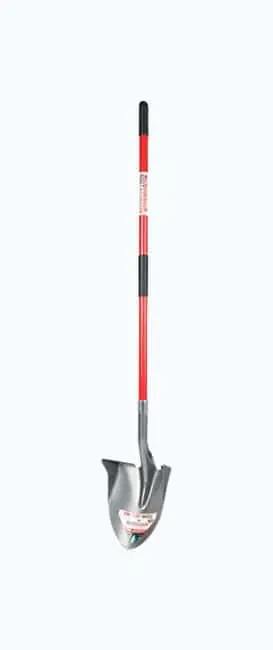
Instead of using a small hand weeder, why not try the Root Assassin Shovel? This is great for deep roots, thanks to the curved tip and sharp serrated edges. It makes it easy to dig into the soil and get down to deep roots. The super-pointed tip lets you get very deep into the soil without too much effort.
2. Hand Dig
You can also, of course, hand dig the weeds, as we’ve talked about a few times already. However, for extra assistance, grab a daisy grubber or an old knife to get to the bottom of deep-rooted weeds.
3. Standing Tool
If your hand tools aren’t cutting it for you, try standing tools such as a long-handled hoe. One with a sharp blade will be your best bet here as it can go farther into the ground with less effort.
Experienced gardeners love the CobraHead Weeder, particularly for deep roots as it’s designed for such jobs. Plus, it can save time you would otherwise spend digging roots by hand.
You can also try long-handled loppers for getting down to deep roots.
4. Contact a Professional
When in doubt, hire a professional to remove deep-rooted weeds. This can save you time and stress when you know that there’s someone out in your yard who knows exactly what they’re doing.
How to Get Rid of Weeds Permanently
While all of our methods discussed already could potentially remove weeds permanently, there’s one more method we want to share with you: Glyphosate.
Glyphosate is a super common weed killer that works quickly and effectively, often in only one application.
Glyphosate does the following:
- Kills most garden weeds.
- Kills the roots of the weeds to prevent regrowth.
- Doesn’t hurt or damage the soil.
- Ensures the soil is a safe place for new plants.
Follow the instructions on your chosen Glyphosate products for the most effective solution.
Tips for Getting Rid of Weeds
Before you go, here are the last few tips for removing weeds:
- It’s best to apply weed killers in spring or summer while the weeds are actively growing. Always check the product packaging for specific advice.
- Apply weed killers on a warm day that doesn’t forecast rain. Rain can wash the weed killer from the area and prevent it from absorbing into the ground, where it will kill the weeds.
- If you’re still looking for a natural method, try baking soda. It can kill weeds for the season, but keep in mind they may return. Baking soda works by drawing water from the plant and dehydrating it, so it dies (1). Simply sprinkle the baking soda over the moistened soil, ensuring the baking soda sits on top of the weed’s foliage.
- Plant cover crops, such as wheat or barley to block weeds from growing like crazy.
- Stay on top of weed growth by having a pre-emergent at hand so you can tackle weed growth before it even starts. It’s best to apply pre-emergent in early spring after cultivating to prevent weed growth.
- Keep your garden edges mowed down to prevent weeds from growing out of control. A good trimmer, rather than a mower, is helpful here.
FAQs About Weed Removal
Wave the Weeds Away
Now that you have all the best tips for removing weeds, you can finally get rid of them for good.
Whether you’re looking for a natural method or something that utilizes the powers of useful chemicals — we have you covered. Why not try a few methods before deciding which is the most effective for your weeds?
